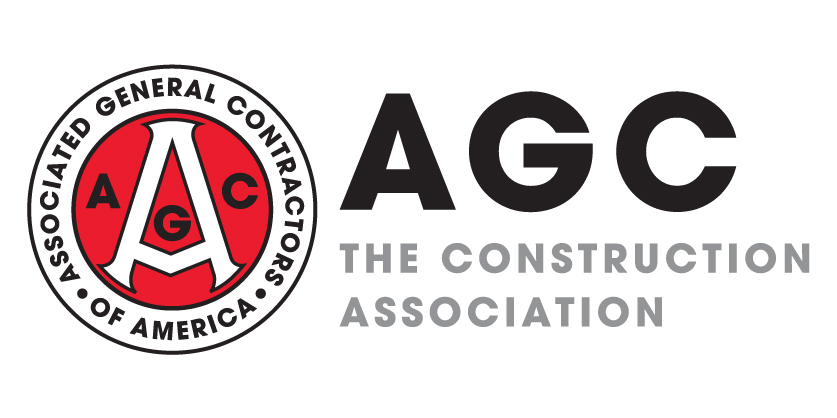
Seasonally adjusted construction employment increased from June 2018 to June 2019 in 42 states, declined in eight states and remained unchanged in the District of Columbia, an AGC analysis of Bureau of Labor Statistics data released on Friday showed. California added the most construction jobs (40,300 jobs, 4.7%), followed by Texas (39,500, 5.4%), Florida (25,800, 4.8%), Arizona (18,200, 12%) and Georgia (12,700, 6.5%). West Virginia again added the highest percentage of construction jobs (20%, 8,100 jobs), followed by Wyoming (14%, 2,800), Arizona and Alaska (10%, 1,600). Construction employment reached new highs (in records dating back to 1990) in Colorado, Oregon and Texas. Louisiana again lost the largest number and percentage of construction jobs for the year (-12,300, -8.1%). Other states with large job losses include Massachusetts (3,400, -2.1%), Maryland, (-2,200, -1.4%), Connecticut (-1,000, -1.7%) and Montana (-800, -2.8%). Other states with a substantial percentage decline include Montana, Vermont (-2.7%, -400 jobs), Massachusetts, Connecticut and Maryland. Construction employment rose from May to June in 30 states, decreased in 17 and was unchanged in D.C., Alaska, New York and Rhode Island. (AGC's rankings are based on seasonally adjusted data, which in D.C., Hawaii and Delaware is available only for construction, mining and logging combined.) Contractors are invited to fill out the 2019 Autodesk and AGC of America Workforce Survey. Results will be released on August 27, with breakouts for each state that has enough responses.
The American Institute of Architects (AIA) on Thursday released its semi-annual "consensus forecast," showing eight forecasters' predictions and the median forecast for nonresidential building construction spending growth. The medians for total nonresidential building spending growth are 3.8% in 2019 and 2.4% in 2020, with commercial (office, hotel, retail and other commercial) increasing by 2.5% and 1.1%, respectively; institutional (health, education, religious, public safety, and amusement and recreation) increasing by 4.9% and 3.7%; and industrial increasing by 6.4% and 3.3%. "These projections are largely unchanged from where they stood at the beginning of the year," the report noted.
The Architecture Billings Index (ABI) slipped to a reading of 49.1, seasonally adjusted, in June from 50.2 in May, AIA reported on Wednesday. The ABI measures the percentage of surveyed architecture firms that reported higher billings than a month earlier, less the percentage reporting lower billings; scores below 50, on a 0-100 scale, suggest billings decreased overall. "'With billings declining or flat for the last five months, it appears that we are settling in for a period of soft demand for design services,' said AIA Chief Economist Kermit Baker....'With the new design contracts score reaching a 33-month low and the project inquiries score hitting a 10-year low, work in the pipeline may start to get worked off, despite current robust backlogs.'" Scores (based on three-month moving averages) varied by practice specialty: residential (mainly multifamily), 46.3, down from 46.7 in May and below 50 for the fourth consecutive month; institutional, 47.0, down for the sixth month in a row, from 47.8; commercial/industrial, 52.3, up from 51.3; and mixed practice, 54.3, down from 54.9.
Housing starts (units) in June slipped 0.9% at a seasonally adjusted annual rate from May but rose 6.2% year-over-year (y/y) from June 2018, the Census Bureau reported on Wednesday. Multifamily (five or more units) starts decreased 9.4% from May but jumped 25% y/y. Single-family starts increased 3.5% for the month but dipped 0.8% y/y. Residential permits declined 6.1% for the month and 6.6% y/y. Multifamily permits fell 21% and 13%, respectively. Single-family permits edged up 0.4% in June but decreased 4.7% y/y. Despite the inconsistent results, multifamily permits in the first six months of 2019 combined total 212,000, 16% higher than year-to-date starts, implying there is a backlog of projects that may break ground later in the year.
Construction data firm ConstructConnect reported on July 15 that the value of starts in June fell 6.4% y/y from June 2018, not seasonally adjusted. For the first half of 2019, starts fell 8.9% year-to-date, compared with the first six months of 2018. Residential starts tumbled 21% y/y and 13% year-to-date, with multifamily starts down 48% and 24%, respectively, and single-family starts down 9.1% and 8.2%. Nonresidential starts rose 3.2% y/y but slid 6.4% year-to-date, as nonresidential building starts fell 15% and 8.0%, respectively, and civil starts jumped 39% y/y but slipped 3.7% year-to-date.
"Economic activity continued to expand at a modest pace overall from mid-May through early July, with little change from the prior reporting period," the Federal Reserve reported on Wednesday in the latest "Beige Book." The Beige Book is a compilation of informal soundings of business conditions in the 12 Fed districts, which are referenced by the name of their headquarters cities. "On balance,...residential construction activity was flat. Nonresidential construction activity increased or remained strong in most reporting Districts.... The reports noted continued worker shortages across most sectors, especially in construction.... steel and lumber prices softened due to lower demand." AGC compiled all construction-related comments.
The Federal Highway Administration (FHWA) recently posted a first-quarter (Q1) 2019 value for its National Highway Construction Cost Index (NHCCI), along with revised estimates for Q2 through Q4 2018. Prices fell 1.6% in the latest quarter, the first decline since Q4 2017. But the y/y increase in Q1 2019 was 10%. According to FHWA, the NHCCI "is a quarterly price index intended to measure the average changes in the prices of highway construction costs over time and to convert current-dollar highway construction expenditures to real-dollar expenditures....The NHCCI covers the universe of the nation's highway projects and arrive[s] at an average cost index for all highway construction."




